Choosing the right size for your gazebo is essential to creating a space that meets your outdoor needs, enhances the beauty of your garden, and complements your lifestyle.
This piece guides you through the nuances of what size gazebo do I need, ensuring you make an informed decision.
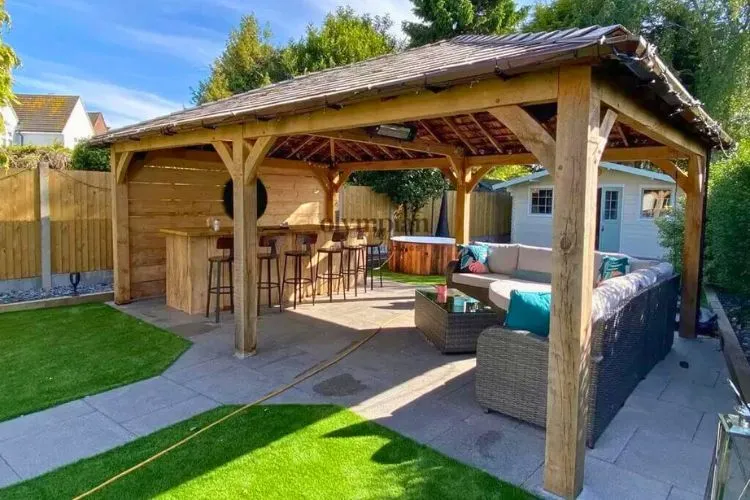
Contents
- 1 Understanding Gazebo Sizes
- 2 What Size Gazebo Do I Need?
- 3 Key Factors to Consider
- 4 Local Regulations and Restrictions
- 5 Climate Considerations
- 6 Integration with Existing Landscape
- 7 Material Choices and Size Implications
- 8 Pro Tips
- 9 Frequently Asked Questions (FAQs)
- 9.1 What’s the most popular gazebo size for medium-sized yards?
- 9.2 Can I customize the size of a gazebo if standard sizes don’t fit my needs?
- 9.3 Do I need a foundation for any size of gazezo?
- 9.4 How do seasonal changes affect my choice in gazebo size?
- 9.5 What are the minimum size requirements for a gazebo to include a dining area?
Understanding Gazebo Sizes
Gazebos come in a variety of sizes, generally starting from small (such as 10×10 feet) to larger dimensions (such as 12×16 feet or more).
The size typically refers to the ground area the gazebo covers. Understanding these dimensions is the first step towards deciding the right gazebo size for you.
What Size Gazebo Do I Need?
Purpose of the Gazebo
Begin by defining the main purpose of your gazebo. If you plan to use it for entertaining guests, you’ll need a larger size compared to using it as a cozy retreat for reading or relaxing.
Gazebos that serve as outdoor kitchens or dining areas also require more space to accommodate appliances and seating.
Assessing Your Space
It’s crucial to measure the available space in your yard. Ensure there’s enough room not just for the structure but also for people to move around comfortably.
Don’t forget to factor in additional space for any landscaping or pathways you may want around the gazebo.
Key Factors to Consider
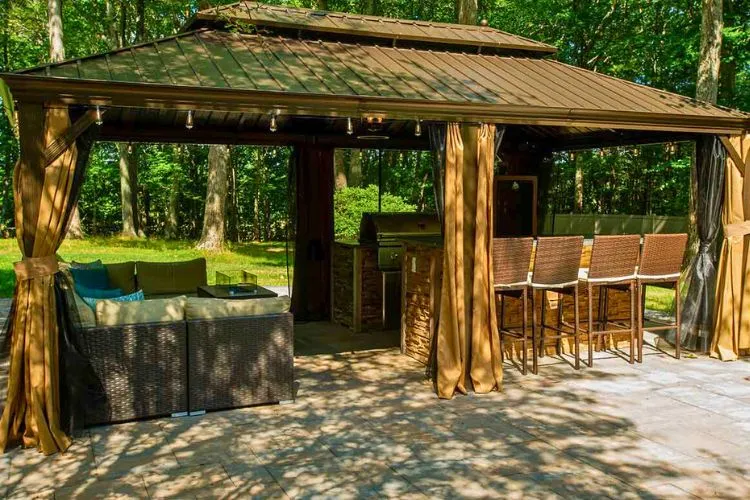
Number of People
Estimate how many people will typically use the gazego at one time. A general rule is to allow about 35–40 square feet per person. This ensures everyone has enough space to move and relax without feeling crowded.
Furniture and Accessories
Plan what furniture or accessories you intend to place inside your gazebo. Consider the space needed for chairs, tables, and decorative items, ensuring there’s enough room for people to navigate around them easily.
Future Needs
Think about how your needs may evolve. Perhaps you’ll want to add more seating or an outdoor kitchen in the future. Opting for a slightly larger gazebo now can save you from the need for a costly upgrade later.
Local Regulations and Restrictions
Before making a final decision, check your local building codes and neighborhood association rules. Some areas have size restrictions or require permits for outdoor structures. Knowing these regulations can prevent legal issues.
Climate Considerations
When selecting a gazebo, considering the local climate is essential as it significantly impacts the choice of size and materials.
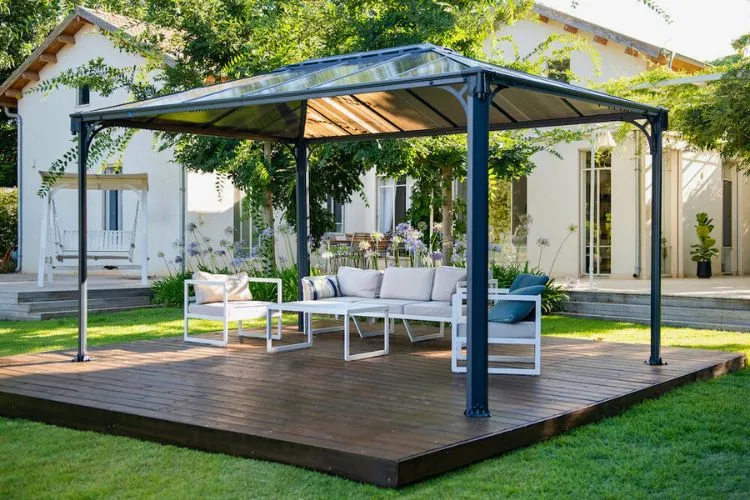
In regions with heavy snowfall, a gazebo with a sturdier build and steep roofs is preferable to prevent snow accumulation, which might require a larger footprint to accommodate reinforced structures.
Areas prone to high winds might benefit from smaller, more robust gazebos anchored deeply into the ground to withstand gusts. For hot and sunny climates, opting for a larger gazebo can provide extensive shaded space, essential for comfort.
The material choice also varies; wood is great for cooler, moist climates due to its natural insulation properties, whereas metal might be superior in areas experiencing intense sun, offering durability and reflecting heat.
Each material and size choice should align with weather conditions to ensure longevity and functionality of the gazebo throughout the year.
Integration with Existing Landscape
Choosing the right gazebo size that complements and harmonizes with your garden’s existing features is pivotal. Start by assessing the scale of your outdoor space and its dominant elements like ponds, paths, or plant arrangements. A gazebo should enhance these features, not overshadow them.
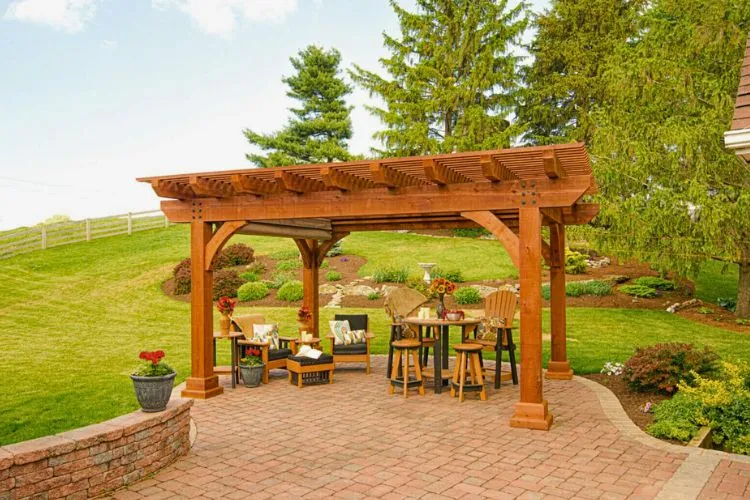
For instance, placing a smaller gazebo near a garden pond can create an intimate setting without overpowering the water feature. Conversely, larger gardens with extensive pathways and flower beds might accommodate a more substantial gazebo, serving as a focal point or destination within the landscape.
Consider the lines and flow of your garden – a gazebo should fit seamlessly, encouraging a natural transition from one area to another. It’s also vital to match the gazebo’s style with the garden’s theme; a rustic wooden gazebo blends well with lush greenery, while a sleek metal design suits a modern, minimalist garden.
Ultimately, the gazebo should appear as a natural extension of the landscape, enhancing the overall aesthetic and functional flow.
You may also find useful: Can Gazebos Be Used in the Rain? | Aluminium vs Stainless Steel Gazebos
Material Choices and Size Implications
The material of your gazebo not only influences its appearance but also impacts practical size considerations. Wood offers a traditional, warm look and is available in various sizes, but larger wooden structures may require additional support and maintenance to combat weathering.
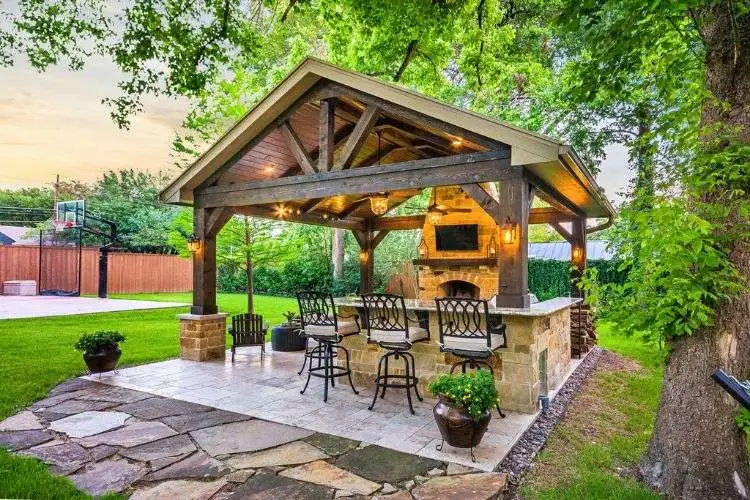
Metal gazebos, often made from aluminum or steel, provide durability and can be engineered to span wider spaces with less support, allowing for greater size flexibility.
Vinyl is low-maintenance and resistant to decay, making it a good option for both small and large gazebos, though it may lack the strength of metal for very large spans.
Each material brings distinct properties that affect the design, and by extension, the ultimate size of the gazebo.
Pro Tips
For personalized advice, consult with gazebo or landscape professionals. They can provide insights based on your specific yard layout and needs. Additionally, exploring showrooms or online galleries can offer inspiration and a clearer idea of what might work for your space.
Frequently Asked Questions (FAQs)
What’s the most popular gazebo size for medium-sized yards?
A 12×12 foot gazebo is quite popular for medium-sized yards. It provides ample space for a variety of uses without overwhelming the space.
Can I customize the size of a gazebo if standard sizes don’t fit my needs?
Yes, many companies offer custom gazebo sizes. This ensures you get a gazebo that fits perfectly within the available space and meets your specific needs.
Do I need a foundation for any size of gazezo?
A stable foundation is crucial for gazebos of all sizes. It provides stability and extends the life of your structure. Consult with professionals to determine the best foundation for your gazebo.
How do seasonal changes affect my choice in gazebo size?
Consider how you will use your gazebo throughout the year. In regions with colder seasons, a larger gazebo can accommodate heaters or fire pits for year-round enjoyment.
What are the minimum size requirements for a gazebo to include a dining area?
For a comfortable dining area, a gazebo size of at least 12×12 feet is recommended. This allows room for a table and movement around the seating area.
Conclusion:
The perfect gazebo size depends on a variety of factors, including the intended use, available space, and local regulations.
By carefully considering these aspects, you can choose a gazebo that enhances your outdoor living experience for years to come. Remember, investing a little more in size now can provide greater flexibility and enjoyment down the line.

Sergio Gomes, a passionate advocate for outdoor living and the male voice behind Shades Authority. With years of experience, Sergio is your trusted source for expert insights on gazebos, pavilions, cabanas, pergolas, and all things outdoor shade solutions. Join him on a journey to transform your outdoor spaces into stunning, functional retreats
